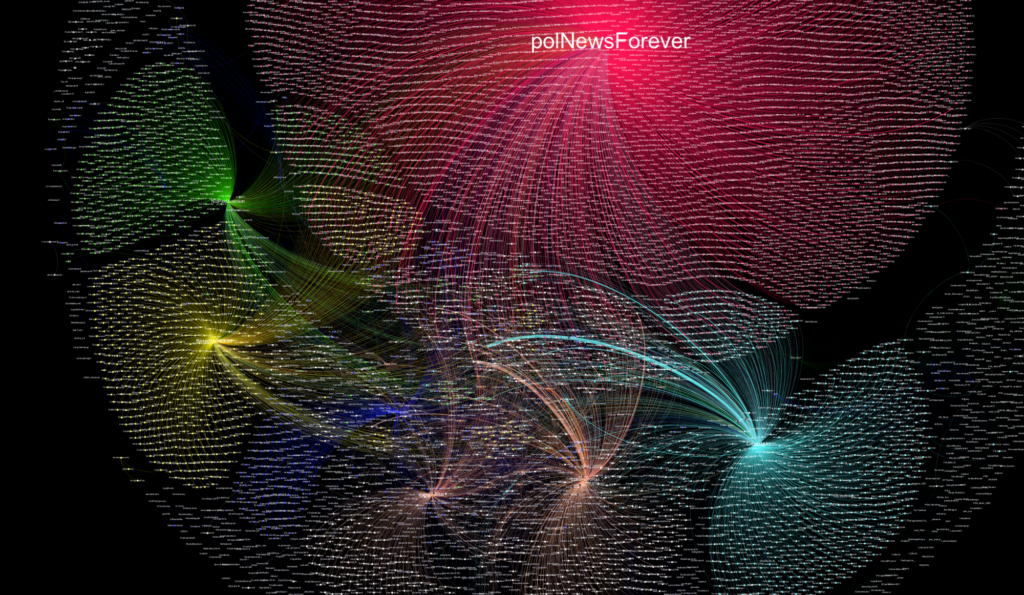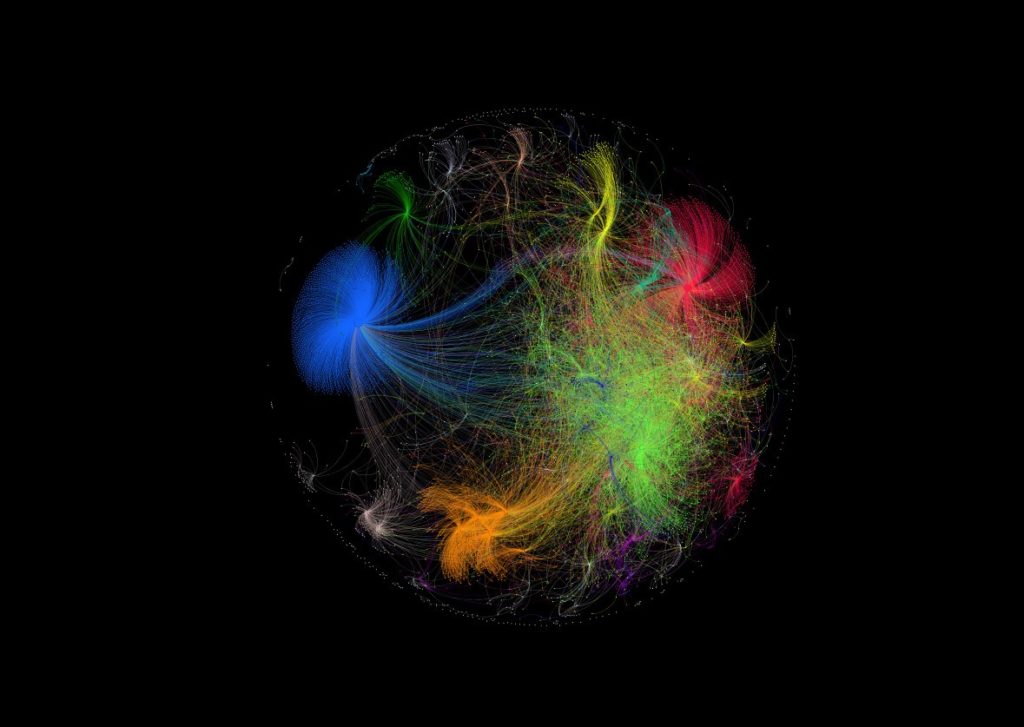Politics
Finding Beauty in Pain: See One Artist’s Breathtaking Visualization of the Viral #MeToo Campaign
The artist has been using software to visually map the proliferation of the hashtag.

The artist has been using software to visually map the proliferation of the hashtag.

Sarah Cascone

Last month, the hashtag #MeToo began proliferating across social media as part of an effort by women to illustrate just how frequently they are sexually harassed and assaulted.
Now, multimedia artist Erin Gallagher has harnessed that viral message as a stunningly dense image that shows just how much the hashtag resonated in the Twitter community.
Trained in graphic design, Gallagher now dedicates her practice to visualizing conversations on Twitter. She became interested in the phenomenon after running into a large number of bots on Mexican Twitter while doing some translation work. Curious about how much spam these fake accounts generated, Gallagher began looking at research that visualized the problem.
“Since the first time I saw these graphics, I was in love,” Gallagher told artnet News. “I think they are beautiful.”

Erin Gallagher’s visualization of deleted Tweets of the #UniteTheRight hashtag. Courtesy of Erin Gallagher.
Over the past few months, she’s been learning Gephi, an open source visualization software, in order to create imagery of her own. Although the program involves a lot of math and complicated concepts such as modularity and the centrality of the node, the resulting images—blooms of color on a back background—are unexpectedly striking, resembling trailing fireworks in the night sky.
Gallagher’s inspiration usually comes from stories in the news, so her Twitter visualizations tend to have a political bent. Unlike her investigation into the effects of bots and automation, however, “MeToo was a little bit different,” she said. “It was neat because it was a human network. Here’s what an actual giant meaningful conversation looks like.”

Erin Gallagher’s visualization of the spread of the #UniteTheRight hashtag. Courtesy of Erin Gallagher.
The #MeToo movement, founded by activist Tarana Burke, is more than 10 years old, but it took off last month following the damning allegations of sexual assault levied by dozens of women against Harvey Weinstein.
Amid widespread calls to out more offenders in Hollywood and other industries, actress Alyssa Milano posted a Tweet on October 15 suggesting that “if all the women who have been sexually harassed or assaulted wrote ‘Me too’ as a status, we might give people a sense of the magnitude of the problem.”
The next day, Gallagher began collecting the #MeToo tweets, tracking the use of the hashtag over the next 31 hours. She then used that data to produce a graphic. “It’s a snapshot of conversation of who was talking about the #MeToo hashtag at that time period,” she said.
If you’ve been sexually harassed or assaulted write ‘me too’ as a reply to this tweet. pic.twitter.com/k2oeCiUf9n
— Alyssa Milano (@Alyssa_Milano) October 15, 2017
“The network froze my computer several times just trying to make preliminary visualizations. I’ve never seen a network so dense before,” Gallagher wrote on Medium. “I thought I made a mistake and re-checked my work several times to be sure it wasn’t an error.”
Her first graph includes a visual representation of no fewer than 24,722 tweets, and mapped their spread throughout different communities in the social network. The largest proliferations stem from Milano and New York Post writer Alexis Benviste. The visualization contains 10,709 distinct groups—far more than Gallagher has ever previously encountered in a single study.
“I have never seen a hashtag network with so many communities before,” Gallagher wrote. “The dense areas filled with what looks like white dots are tens of thousands of small groups of people connecting in the #MeToo hashtag.”
Those 24,722 tweets only begin to scratch the surface. According to the Hollywood Reporter, more than 500,000 Twitter users followed Milano’s suggestion within the next 24 hours.
Gallagher has also created visualizations for the Spanish-language version of the movement, #YoTambien, and a world cloud of other hashtags used in conjunction with #MeToo, such as #nomore and #ibelieveyou.
“My primary motivation was to see if I could make a visual representation of a digital conversation—I didn’t really think of them as art,” Gallagher said, noting that she is, however, receiving requests to sell them as prints. “They’re pretty to look at, but the context that I provide gives it depth.”